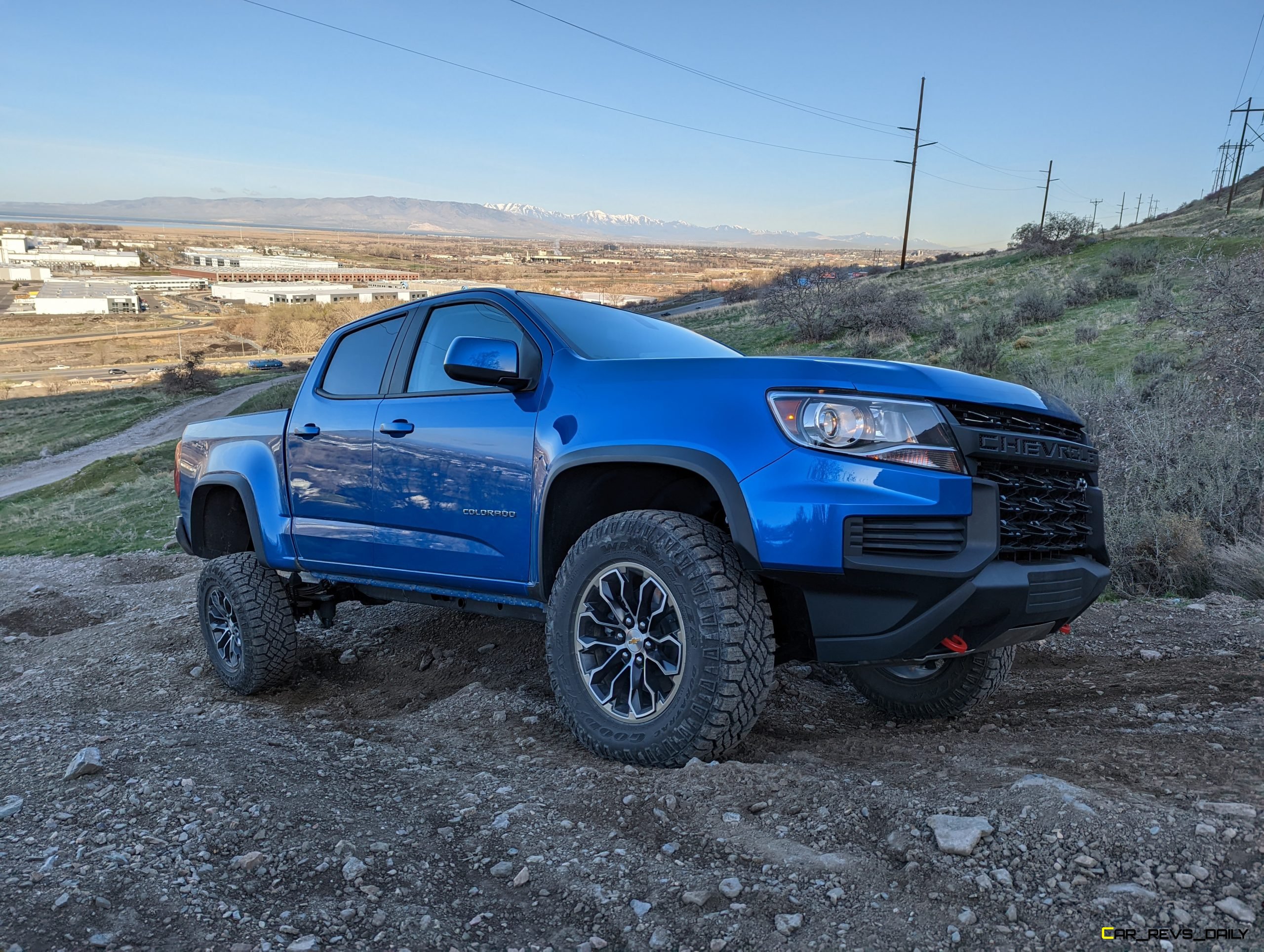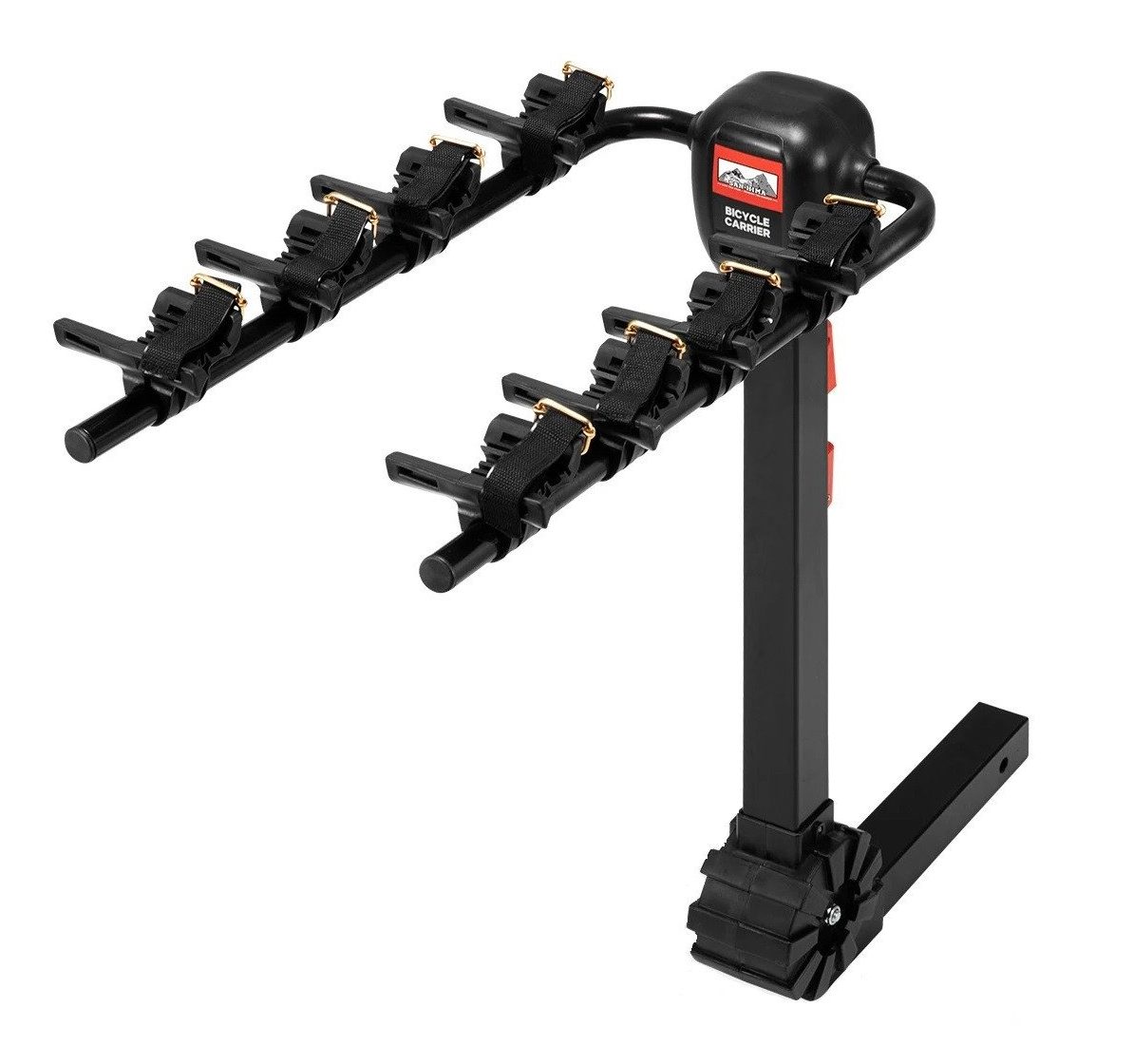San Hima Hitch Mounted Bike Rack
San Hima makes a variety of cargo solutions, and one of those is a hitch mounted bike rack. With so many options on the market at varying prices, how does the San Hima bike rack stack up to the competition? What sets it apart from the others? Is it worth the price?
Full Disclosure: Vicoffroad.com sent us a San Hima hitch mounted bike rack free of charge for our review
Installing the San Hima Bike Rack
When we opened the box, we were pleasantly surprised to find that no assembly was required. We removed the styrofoam and plastic bag from the rack and it was ready to go.
Installation is very easy. Simply pull the bottom red lever to rotate the shank portion down and slide the shank into the receiver. Included in the package is a bolt to use as a hitch pin with a nylock nut. This adds security and makes it more difficult to steal, but a locking hitch pin would be easier.
Also included in the package is an anti-rattle device. This is also straightforward to use with a U-bolt that goes over the top of the shank and a plate that sits under the vehicle’s receiver. Slide the plate up onto the U-bolt, add a washer, lock washer, and nut on each side and tighten with a 17mm or 11/16 wrench. Tighten the nuts until you can no longer moved the bike rack with ease.
Loading and Access
To load a bicycle onto the rack, pull the top red lever and lift the arms that hold the bikes. Place the bike on the rack and tighten the straps around the bike frame to secure it in place. Additional straps are included that can be used to hold the wheels in place, so they don’t spin. They can also hold components of the bikes in certain positions. This prevents different bikes from hitting against each other and potentially causing damage.
Accessing a truck bed or hatch of a vehicle while the rack is installed, simply pull the bottom lever, and lower the rack down. This allows for a tailgate to be lowered or a hatch to be lifted, without removing the bike rack entirely. It is possible to lower the rack with a bike on it, which saves time, but it may get a little heavy when fully loaded with 4 bikes.
Driving with the rack on was no issue at all. The anti-rattle device worked perfectly, and we never felt any movement from the rear of the vehicle. There was no clanking or rattling and the bikes were very secure. Thanks to the additional straps that are included, none of the bikes rotated or were able to damage other bikes on the rack.
Storing the San Hima Bike Rack
Storing the San Hima hitch mounted bike rack is effortless. Pull the top lever to fold the top bars down and pull the bottom level to fold the shank portion up. In its folded state the bike rack sits nicely on a flat surface and ends up being about 6 inches tall. This makes it easy to store in the back of a vehicle, or in the garage without taking up too much space or being too awkward to store other things on or around it.
Check out our video review below and if you’re looking to pick one up yourself, here is the link to the San Hima hitch mounted bike rack that we tested.
Possible Improvements
The two main items that can be improved upon are the anit-rattle system and hitch pin bolt. Attaching or detaching these items makes setting up and breaking down the rack take significantly longer. For those in a hurry, normal hitch pin could be used and the anti-rattle feature could simply be left off. To remedy this, San Hima could go to a one bolt system as is found on competing products. Better yet, a novel anti-rattle system could be created for easier use.
Conclusion
In conclusion, we really enjoyed the San Hima bike rack. We found it to be very easy to use, adjust, and store. When compared to the competition the adjustment levers are much easier to use than the pin style most others have. While there are other options that are cheaper, the San Hima is a complete package for a similar price to the much harder to use competitors. We’ve had no issues with the San Hima, but we haven’t had the rack for very long. If anything with our experience changes, we will update this story.

Matthew Barnes is an experienced towing expert. He works as a mechanical engineer and his day job involves testing a variety of vehicles while towing trailers of all types and sizes. Matt shares his knowledge by writing for automotive news outlets in the evenings. When he’s not working he can be found spending time in the great outdoors with his family. He enjoys camping, hiking, canyoneering, and backpacking. Whenever possible he spends time riding in or on any power sports vehicle he can find and claims he can drive anything with a motor, which probably isn’t true.
Matt lives in the Utah mountains and often posts cool off-roading videos to his Instagram and YouTube channel.

